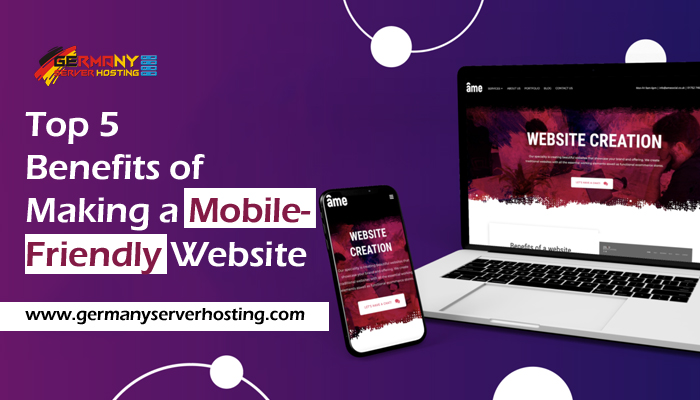
Mobile-Friendly websites are becoming more and more popular. They allow your website to be fully optimized for mobile devices, and they also allow your website visitors to browse your site on their phones without having to scroll too far or use pinch-to-zoom. In this article, we will discuss the top 5 benefits of making a mobile-friendly website.
What is a Mobile Friendly Website?
A mobile-friendly website is designed to be viewed and used on mobile devices such as smartphones and tablets. The website is easy to navigate and use on a small screen. There are several benefits to making a mobile-friendly website, including the following:
- Increased Visibility. A mobile-friendly website will be seen by more people, as it will be easier to access. It could lead to increased traffic and revenue.
- Reduced Costs. Making a website mobile-friendly can save you money in terms of design costs, bandwidth charges, and lost sales due to slow loading times.
- Increased Customer Loyalty. A well-designed mobile-friendly website will encourage customers to take their business online onto their smartphones or tablets.
- Increased Traffic. Making your website mobile-friendly can help increase traffic by directing more people to your site from their devices. It can help you attract new customers and retain those you already have. In addition, if you have a responsive design, users with different device sizes will be able to see your content in the same way.
- Improved Conversion Rates. They are making your website mobile-friendly and can also improve conversion rates. Studies have shown that websites that are optimized for mobile devices perform better than those that are not. People tend to convert more efficiently on mobile devices than on computers. By improving your website’s overall design and functionality, you can make it easier for visitors to take action and make a purchase.
- Reduced Costs and Time Spent on Maintenance. A well-designed, mobile-friendly website can save money and time spent on maintenance. Because so many people now use their smartphones and other portable devices to access the internet, having a site that works well on these devices is essential. Creating a separate version of your site optimized for mobile devices will save you time and hassle! Additionally, if you need to update or modify any content or functionality on your website, making it mobile-friendly will make this process much more manageable.
How To Develop a Mobile-Friendly Website
Making your website, mobile-friendly can have several benefits, including increased traffic and conversion rates, decreased bounce rates, and increased brand awareness.
1. Use a Mobile-Friendly Template: Starting with a template specifically designed for mobile devices can make everything more manageable and quicker to implement. Not only will this help you conserve time and resources, but it will also improve your website’s overall look and feel.
2. Test Your Website on Mobile Devices: Once you have a template or design in place, it’s essential to test it on different mobile devices to ensure that it looks good and functions as intended on all platforms. It will help you identify any potential issues before they become significant problems.
3. Optimize Images for Mobile viewing: When designing or editing images for your website, be sure to reduce the file size as much as possible while still maintaining quality. It will make loading times faster on mobiles and increase pageviews overall.
4. Use responsive Design: When building your website, make sure that all content is responsive so that it looks good no matter what device is being used to view it (smartphones, tablets, laptops). It will help keep users happy and minimize frustration while browsing your site.
5. Make Sure Your Website Is Search Engine Friendly: Ensuring that your website is easily searchable using search engines is essential for improving visibility and rankings
Some tips for building a mobile-friendly website:
- Make sure your website looks and works great on any device, not just mobiles. It means using the latest standards for web design, including responsive design and cross-browser compatibility.
- Use large images that will look good on both desktop and mobile screens. And don’t forget to include alt tags so people can easily see the descriptions of photos and videos.
- Make sure your site is easy to navigate with simple menus, clear text labels, and simple links. You don’t want your users struggling with your site!
- Include quick links directly to critical pages or features on your website – this will make it easy for users to quickly find what they’re looking for.
- Use Google Web Fonts throughout your site – these fonts make websites look more modern and professional, especially on mobiles.
Conclusion
If you want your business to stay ahead of the curve, make sure your website is mobile-friendly! A website that is mobile friendly not only looks great on a smartphone, but it also functions better.
Also get some information about getting the Right Way To Invest In Web Development, visit this link.






